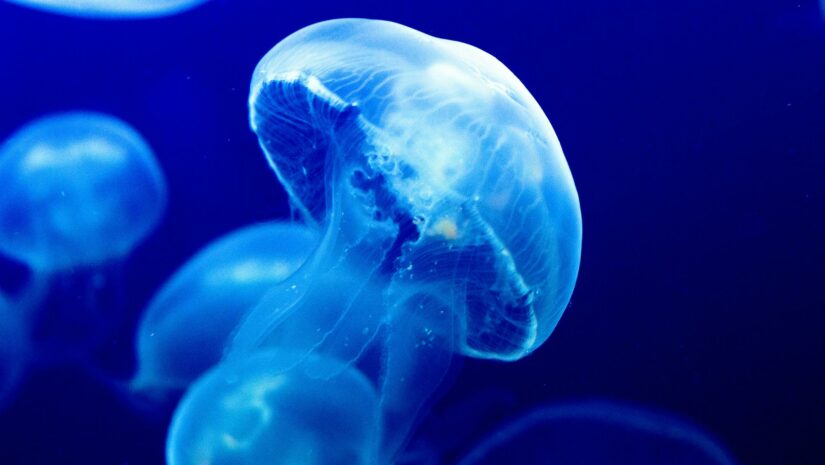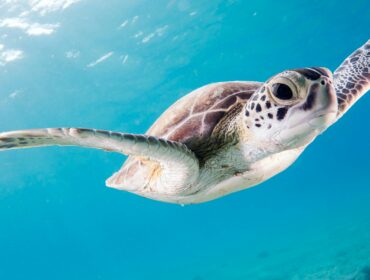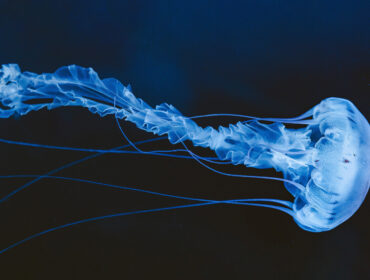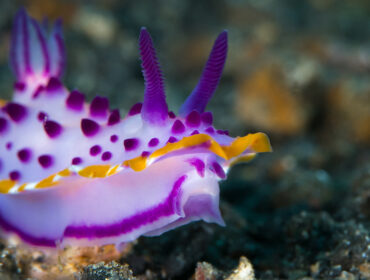While jellyfish are known for their poisonous stings, there are plenty of non-stinging jellyfish species in the ocean. These interesting and widely feared marine creatures are the free-swimming relatives of corals, anemones, and hydroids—and in the same way that many of these are safe to come into physical contact with, so are several types of jellyfish.
If you’re fascinated by these beautiful sea animals but would like to ensure that they’re safe to be around in case they ever come near you in the ocean, we invite you to get to know the five most popular species of harmless jellyfish below.
Harmless Jellyfish Species
Keep in mind that this is not a list of jellyfish that don’t sting—it’s a list of the types of jellyfish that aren’t dangerous to humans. While some of these species do sting, they don’t present any real dangers to anybody who comes into contact with their tentacles or stinging cells.
If you ever do get stung by any of them, proper first-aid includes plucking away any tentacles that may still be on the skin, taking a hot shower or applying a heat pack, rinsing the area with vinegar, and taking pain killers until the pain subsides.
Contrary to what you may have seen on TV, you should never pee on a jellyfish sting.
Aequorea Forskalea
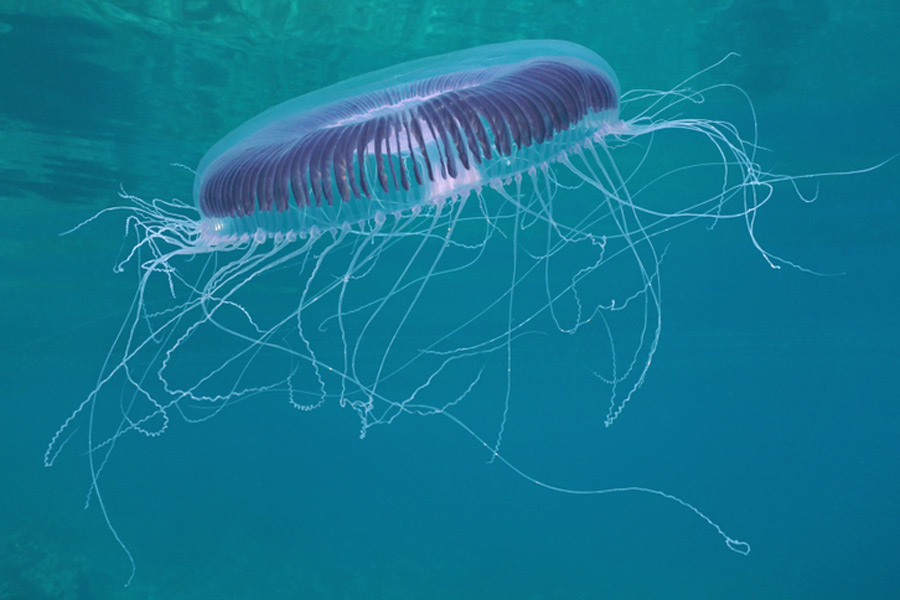
Known as the many-ribbed jelly or crystal jelly, the Aequorea forskalea measures a maximum of 10 centimeters and is easily recognizable by the radial canals connecting the center and the margin of the flat bell. Its cnidocysts (stinging cells) are not dangerous for humans, making it one of the most harmless species of jellyfish.
Preferring coastal habitats, the Aequorea forskalea produces a green fluorescent protein (GFP) common to many jellyfish, which has been isolated for use in diagnosing pathologies and research in molecular biology.
Characteristics and Features:
- Stings mildly
- Mostly clear and transparent
- Thick saucer-shaped head that gradually thins towards the margin
- Up to 175mm wide
- Dark brown or bluish radial canals (usually 60 to 160)
- Thin, hair-like tentacles
- Found in upper waters of subtropical regions
Pleurobrachia Bachei
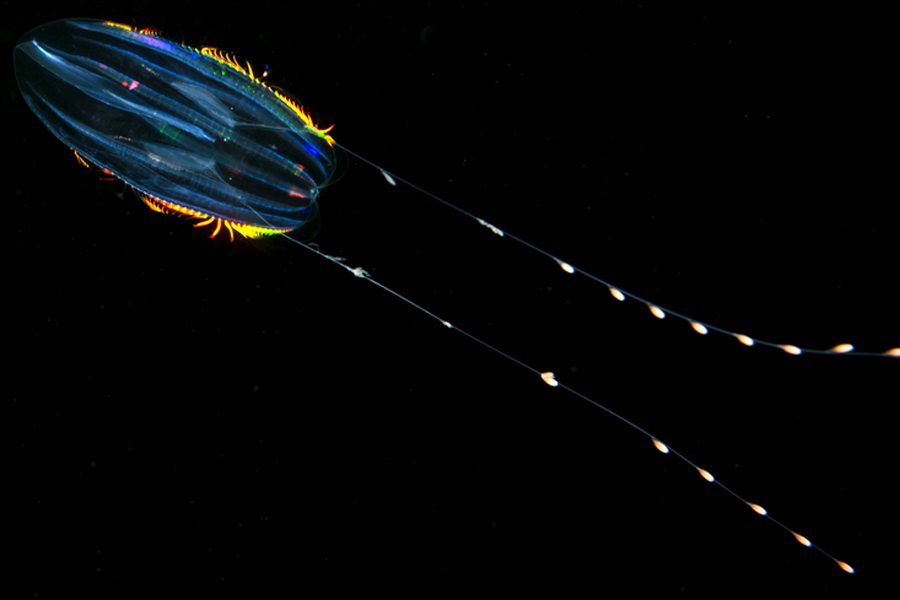
These jellies are also known as sea gooseberries. No larger than 1.2 inches ( or 3 centimeters), these jellyfish have ribs of cilia, or vibrating hairs, which they use to swim and steer. Interestingly, their transparent, globe-shaped bodies are made of 99% water. They don’t naturally produce or emit light, but their many cilia refract light, which is how it appears to have rainbow-like colors. They’re also one of the few jellyfish that don’t sting, but it has two long branched tentacles equipped with specialized sticky cells (colloblasts) for capturing prey.
They live on the west coast of North America, and can be spotted frequently in the waters off of California.
Characteristics and Features:
- Non-stinging jellyfish
- Gelatinous, globular body
- Appears to be rainbow-colored due to refraction of moving cilia
- Has two long, branched tentacles
- Only lives up to 4 to 6 months
- Usually found in surface waters of the Pacific Northwest
Aurelia Aurita
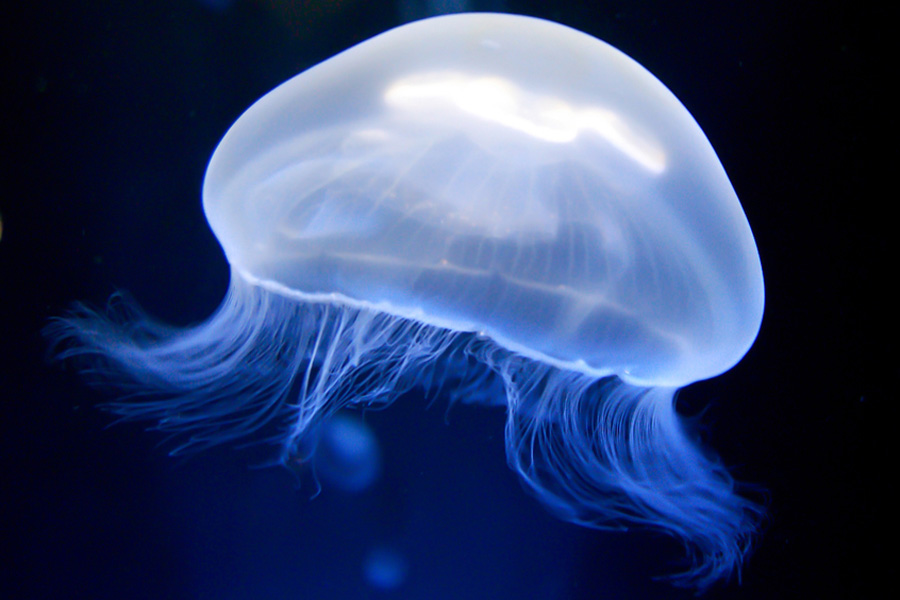
The Aurelia Aurita, known as the moon jelly, is the most common and widely recognized jellyfish species. Though it has venom, it is harmless to humans—it’s even a popular dish in China!
The umbrella on the Aurelia Aurita can reach 30 to 40 centimeters, with marginal tentacles and gonads arranged in four circles. There are four long oral arms in the manubrium.
It lives in all oceans of the northern hemisphere and is very abundant. This jellyfish is also often seen in public aquariums across the globe.
Characteristics and Features:
- Mild sting with harmless venom
- Clear and transparent
- Around 5 to 40cm wide
- Saucer-shaped umbrella head
- Short, stinging tentacles and gonads in four circles
- Four long oral arms
- Abundant in most oceans and coastal waters
- Can withstand freezing water (up to -6 degrees Celsius)
Porpita Porpita
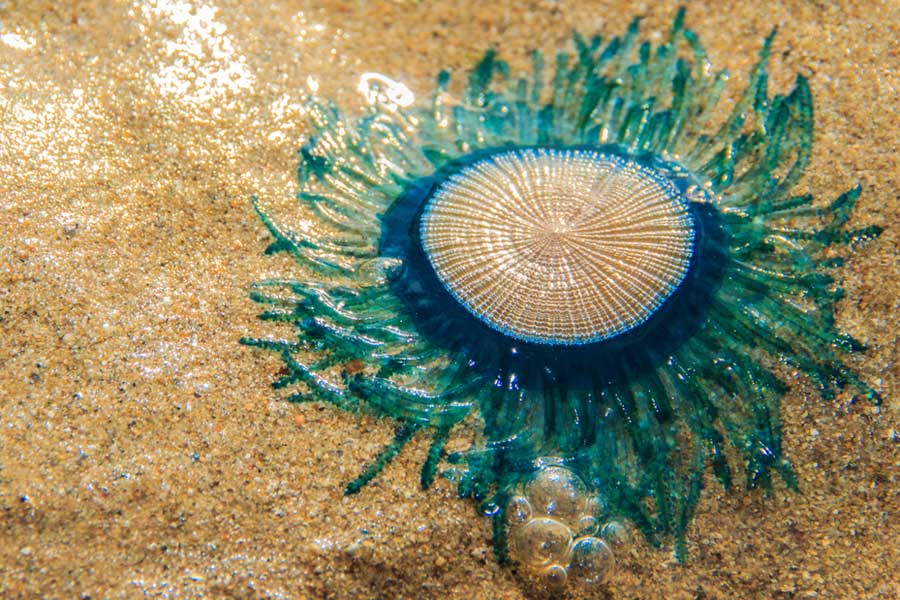
Known as the blue button, the Porpita Porpita can be found floating on the surface of the ocean in swarms. Its body has two main parts: the round and hard golden brown float, which is almost flat and about an inch wide, and the hydroid colony of polyps, which are basically its tentacles, with colors that range from bright blue to yellow. Each strand of tentacle has its own branchlets with stinging nematocysts on the ends.
While it’s definitely not a non-stinging jellyfish, the sting is pretty mild and generally harmless, although it can irritate human skin.
Characteristics and Features:
- Mild sting can cause skin irritation
- Round, flat, and hard golden brown float
- Hydroid colony with colors ranging from bright blue to yellow
- Nematocysts on branchlets of tentacles
- Found on surface waters of tropical and subtropical oceans
Rhopilema Verrilli
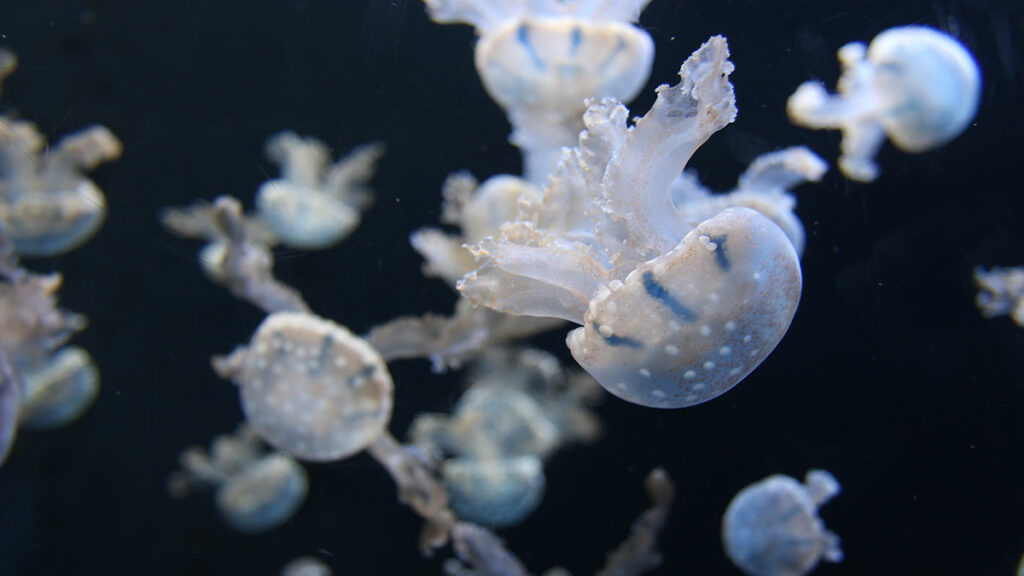
The Rhopilema Verrilli, also known as mushroom cap jellyfish or sea mushroom jellyfish, has several distinguishing features. These include its creamy white color, mushroom-shaped umbrella head, dark markings on its central “tentacles,” and lack of tentacles on its margin. Also, this harmless species of jellyfish can grow up to 20 inches in diameter.
The Rhopiema Verrilli has nematocysts within its bells so it can still sting, albeit very mildly. It lives in gulfs and bays, and is eaten raw or pickled in Japan.
Characteristics and Features:
- Stings mildly
- Creamy white in color
- Mushroom-shaped medusae
- Has stinging nematocysts instead of tentacles
- Lives in gulfs and bays
Harmless Jellyfish Species: Frequently Asked Questions
Moon jellyfish can be touched, as their stinging cells are typically too weak to harm humans. However, sensitivity to jellyfish stings varies among individuals, and some people may still experience minor irritation or allergic reactions. It’s always wise to exercise caution and avoid touching wild jellyfish unless properly trained or supervised.
Not all jellyfish species sting. While the majority possess stinging cells called nematocysts, their potency and effect on humans vary greatly. Some jellyfish have mild stings that are hardly noticeable, while others possess venomous tentacles capable of causing severe pain and even life-threatening reactions.

